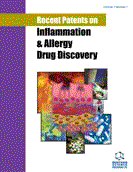Abstract
Atopic eczema or dermatitis (AD) is a chronically relapsing dermatosis associated with pruritus, sleep disturbance and impaired quality of life. AD affects 10 to 20% of school-aged children. The prevalence has increased two to three folds over the past three decades in industrialized countries and there is evidence to suggest that this prevalence is increasing. AD is frustrating to both patients and caregivers and can impose considerable financial impact on the families. The pruritus and sleep disturbance can be intractable and the disease has important physical and psychological implications. Filaggrin (filament-aggregating protein) has an important function in epidermal differentiation and barrier function. Null mutations within the filaggrin gene cause ichthyosis vulgaris and are major risk factors for developing AD. The affected skin of atopic individuals is deficient in natural moisturizing factors (derived from deiminated filaggrin peptides filaggrin) or ceramides (a family of lipid molecules, composed of sphingosine and a fatty acid, found in high concentrations within the cell membrane of cells in the stratum corneum). Avoidance of triggering factors, optimal skin care and topical corticosteroids are the mainstay of therapy for AD. There are two important dermatologic facets to its management, namely, preventive and therapeutic measures. Preventive measures refer to the frequent and proper application of skin moisturizers. When these preventive measures fail to control the disease exacerbation, therapeutic measures such as topical/systemic corticosteroids, antibiotics and immunomodulating agents may be required to control the skin inflammation. Proper moisturizer therapy can reduce the frequency of flares and the demand of topical corticosteroids or topical calcineurin inhibitors. Regular topical application of a moisturizer is the key in the management of patients with AD. Moisturizer therapy of childhood-onset AD is significantly complicated by the diversity of disease manifestations and by a variety of complex immune abnormalities. Recent advances in the understanding of the pathophysiological process of AD leads to the production of new moisturizers and topical skin products targeted to correct reduced amount of ceramides in the skin with ceramide and pseudoceramide products. However, many cosmetic products claimed to have these ingredients have no or limited studies to document their clinical efficacy. Recent studies have shown the therapeutic efficacy of several new compounds. This review provides an update on recent patents that could develop into novel therapeutics available to the clinical armamentarium for the management of the disease.
Keywords: Atopic dermatitis, ceramide, moisturizer, pseudoceramide, DRY SKIN, OPTIMAL SKIN CARE, T-cell immunomodulator, asteatotic eczema, contact dermatitis, macrolide
 71
71


















